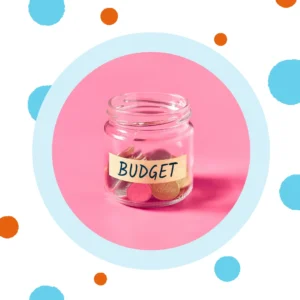
How Do I Get a Hearing Aid?
“WHAT?” You’ve said it so many times your family started a drinking game. The TV volume creeps higher. Your spouse has that look of resigned
Home » Why Are My Hearing Aids Whistling? Understanding the Causes and Solutions

Hearing loss is a common challenge many individuals face, and hearing aids have become indispensable tools in restoring auditory clarity. However, even with advanced technology, users often encounter a vexing issue called “hearing aid whistling.” This phenomenon, also called feedback from hearing aids or squealing, occurs when a high-pitched sound resembling a whistle emanates from the hearing aid.
Understanding hearing aid whistling is vital for those who rely on these devices to communicate effectively. By the time you finish reading, you’ll have a thorough understanding of why hearing devices whistle, strategies to prevent and address the issue, and insights into advanced technologies designed to combat this nuisance. We aim to empower you with the knowledge needed to navigate the world of hearing aids confidently and enjoy the benefits of improved hearing without the unwelcome interruption of whistling.
Table of Contents
ToggleThe whistling sound occasionally emanating from hearing aids can be perplexing and disruptive. This phenomenon results from the interaction between the microphone, amplifier, and speaker components within the hearing aid system. Understanding the underlying causes of hearing aid whistling is crucial to effectively addressing the issue.
The whistling sound produced by hearing aids generally does not harm hearing health. It’s important to clarify that whistling manifests the technology’s interaction and doesn’t pose a direct risk to your hearing. However, repeated whistling can lead to frustration, discomfort, and reduced satisfaction with your devices’ performance.
While whistling might not directly damage your hearing, it can significantly affect your quality of life. An incessant whistling sound can impede your ability to engage in conversations, enjoy social activities, and experience auditory comfort. Understanding why you’re getting that “my hearing aids are whistling” feeling is the key to minimizing that feeling and maximizing your hearing abilities.

Certain conditions can render hearing aids more prone to whistling. For instance, severe hearing loss might necessitate higher amplification, increasing the likelihood of sound leakage and feedback. Additionally, individuals with smaller or irregularly shaped ear canals may find it challenging to achieve a secure fit, leading to more instances of whistling. Moreover, the shape and size of your ears play a significant role in the occurrence of whistling. Unique ear anatomies can result in sound escaping the ear canal and re-entering the microphone, causing feedback. So it’s important to have personalized fittings and adjustments to accommodate individual ear characteristics. The design and the environment can also explain why are my hearing aids whistling.
The design and technology of the hearing aids themselves also contribute to whistling risk. Due to their proximity to the microphone, in-the-ear (ITE) or completely-in-the-canal (CIC) models can be more susceptible to feedback. Conversely, behind-the-ear (BTE) models tend to have a lower risk due to their placement. Advanced hearing aid technologies, such as feedback cancellation algorithms and directional microphones, work to minimize whistling occurrences.
Learn more about BTE hearing aids here.
Beyond individual factors, the environment and activities can also trigger whistling. Environmental conditions significantly affect sound behavior within the ear canal and hearing aid system. Windy conditions, for example, can cause air to flow around the hearing aid, leading to feedback. Also, humidity might alter the fit of the hearing aid in the ear canal. Additionally, environments with reflective surfaces, like large walls or glass windows, can bounce sound back into the microphone, causing feedback. Likewise, activities like talking on the phone or wearing hats can affect the positioning of the hearing aid, potentially inducing whistling. Awareness of these environmental triggers can empower individuals to adapt and make minor adjustments during specific situations to minimize whistling.
Minimizing or preventing hearing aid whistling involves a combination of proper fitting, maintenance, and adaptive strategies. By taking proactive measures, you can enjoy the benefits of your devices without the annoyance of feedback-induced whistling. Some basic suggestions to battle that feeling of “my hearing aids are whistling” include:
There are also strategies for specific situations. So if you’re wondering why are my hearing aids whistling, you can try these techniques:
However, sometimes you just can’t prevent that “my hearing aids are whistling” feeling. That’s when you must reach out to a hearing healthcare professional.
Explore more about Bluetooth hearing aids here.

Hearing healthcare professionals, like those at Injoy Hearing, play a pivotal role in addressing and resolving whistling issues associated with hearing aids. Regular appointments with hearing care professionals are essential, even if your devices appear to function well. Professionals know to fine-tune yours, making precise adjustments to minimize whistling. They can modify amplification levels, microphone settings, and other parameters to optimally balance auditory enhancement and feedback prevention. Balancing your own efforts with professional guidance maximizes the effectiveness of your devices.
Regular telehearing care is part of the Injoy Hearing process.
As a hearing aid user, you can address minor instances of whistling on your own. By familiarizing yourself with your device and implementing simple adjustments, you can mitigate feedback-induced whistling and enjoy uninterrupted auditory clarity. As mentioned above, you can adjust the volume or select different program settings on your hearing aids. Lowering the volume slightly or switching to another program might help alleviate feedback and reduce whistling.
Some other steps for troubleshooting at home include:
By taking these proactive measures, you can hopefully stop wondering why are my hearing aids whistling. However, if whistling persists or becomes more complex, seeking the assistance of a hearing care professional is recommended.

The newest hearing aid models have made remarkable strides in addressing and preventing whistling issues, enhancing users’ auditory experience through innovative technologies that minimize feedback-induced disruptions. These technologies include:
These technologies collectively work to ensure that hearing aid users can enjoy improved auditory clarity without the interruption of whistling. As you explore the advancements in hearing aid design, it’s essential to consider the features that align with your individual preferences and needs.
Hearing aid whistling, though common, need not hinder your auditory experience. Armed with knowledge about the causes, prevention strategies, and professional interventions, you can enjoy clear, uninterrupted sound while wearing your hearing aids. At Injoy Hearing, we’re committed to helping you make the most of your devices. Our experienced professionals offer tailored solutions to address whistling and enhance your hearing experience. Whether it’s adjusting settings, fine-tuning, or exploring advanced technologies, we’re here to guide you on your journey to improved hearing clarity.
With the right knowledge and professional support, you can navigate the world of hearing aids confidently, embracing the joy of enhanced auditory perception and meaningful interactions. Experience life’s sounds fully, without the interruption of whistling, and embark on a path of enriched hearing health.

“WHAT?” You’ve said it so many times your family started a drinking game. The TV volume creeps higher. Your spouse has that look of resigned

If a noisy restaurant feels like a boss fight, you’re not alone. The real showdown is Signia Pure Charge&Go IX vs Phonak Sphere Infinio. One

If you’ve ever cranked up the TV until the dog gave you side‑eye, you’ve probably Googled cheap hearing aids. The price tags look friendly. The

If choosing a hearing aid brand feels like speed-dating for your ears, you’re not alone. Every company claims to have the clearest sound, smartest AI,
Injoy specializes in crafting custom Phonak hearing aid solutions tailored to the unique hearing needs of our patients. With a team recognized as the best in the business and decades of experience in helping people nationwide, we’re dedicated to improving your hearing and, consequently, enhancing your quality of life.
To start your journey towards better hearing with confidence, Injoy is proud to offer a 30-day risk-free hearing aid trial. This allows you to experience the difference our Phonak hearing aids can make, ensuring they meet your expectations and fit your lifestyle perfectly.
Improve your hearing and improve your life today by contacting Injoy to learn more about our risk-free trial!

Need hearing aids? Explore our range of hearing aids and discover the best option for your lifestyle and Unique Hearing Needs.
Are you a current patient with us? We're here to help with any adjustments, repairs, or support you may need.